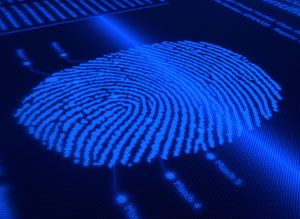Forensic fingerprinting
Fingerprint analysis has been a standard method for forensic analysis and is used to identify suspects at the scene of a crime. Recent advances in next-generation DNA sequencing technology have revolutionized the criminal justice system and has downgraded the importance of fingerprint analysis. However, the positioning of DNA material can be circumstantial in some cases and this is where recent advances in analytical chemistry instrumentation can enhance the power of fingerprint analysis.

Fingerprint analysis has been a standard method for forensic analysis and is used to identify suspects at the scene of a crime. Recent advances in next‑generation DNA sequencing technology have revolutionized the criminal justice system and has downgraded the importance of fingerprint analysis. It was previously considered that DNA evidence indicated the presence of an assailant at the scene of a crime, but this is no longer the case. The positioning of DNA material can be circumstantial in some cases and this is where recent advances in analytical chemistry instrumentation can enhance the power of fingerprint analysis.
A fingerprint is defined as an invisible impression composed of ridges and grooves left by an individual on a surface. Fingerprints are often incomplete and cannot be used for the automated identification protocols used in forensic investigations.1 However, human skin secretes a unique chemical signature that is thought to be influenced by environmental factors such as diet, chemical exposure and individual genetics.
A group of researchers1 published a study which exploited the unique properties of individual fingerprints to create a more detailed profiling method. Rather than simply observing the ridged patterns associated with unique exposure of the individual’s hands to their environment, the scientists analysed the chemical signature as a new parameter for analysis. The study aimed to identify fatty acids associated with specific fingerprints using gas chromatography–mass spectrometry (GC–MS). The group found that there were differences in the chemical signature associated with fingerprints when comparing individuals of different race and gender, specifically variation in the ratio of several fatty acid and methyl esters. There was additional evidence to suggest that other compounds mirrored this variability, however, further investigation is required to confirm this hypothesis. As a greater number of individuals are sampled and additional controls are implemented, it will become clearer if this will method will become commercialized.
1. S. Michalski et al, Forensic Sci, DOI: 10.1111/1556-4029.12010 (2012).
This story originally appeared in The Column. Click here to view that issue.

Regulatory Deadlines and Supply Chain Challenges Take Center Stage in Nitrosamine Discussion
April 10th 2025During an LCGC International peer exchange, Aloka Srinivasan, Mayank Bhanti, and Amber Burch discussed the regulatory deadlines and supply chain challenges that come with nitrosamine analysis.











